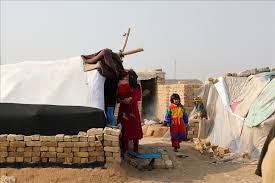Poverty and unemployment in Afghanistan lead children to hard and dangerous work

Poverty and widespread unemployment in Afghanistan have led many children to hard and dangerous work. This condition has several main factors:
-
Severe poverty: Many families force their children to work in order to meet their basic needs due to the lack of sufficient income. These children often work in heavy and low-paid jobs.
-
Wide unemployment: The high unemployment rate among adults means that children are forced to work to help support the family. Lack of access to suitable job opportunities for parents increases the economic pressure on children.
-
Lack of protective laws: The lack of effective protective laws for child labor and the weak implementation of existing laws have caused children to be exposed to exploitation and abuse. These children often work in dangerous and unsafe jobs, without any legal or social protection.
-
Insecurity and instability: war and insecurity in Afghanistan has caused the destruction of economic and social infrastructure. This situation has led to a decrease in educational opportunities and an increase in the need for cheap labor (children).
-
Decreasing access to education: Many children are unable to continue their education due to poverty and the need to work. Lack of access to education threatens the future of these children and creates a vicious circle of poverty and illiteracy.
Hard and dangerous jobs that children do include working in mines, agriculture, construction, carpet weaving and selling on the streets. These jobs are often associated with serious physical and psychological risks that endanger children’s health and well-being.

Poverty and unemployment are one of the reasons why children stay away from school

Poverty and unemployment are the most important factors that keep children away from school. These problems can affect children’s education in several ways:
-
Need for family income: In families facing severe poverty, children are forced to work to contribute to the family’s income. This situation keeps them away from school and education.
-
Inability to pay education fees: Poor families may not be able to pay education-related expenses such as tuition, books, stationery and school uniforms. These financial problems prevent children from continuing their education.
-
Lack of schools and educational facilities: In poor areas, educational infrastructure is insufficient and schools are rare. Even if there are schools, the quality of education may be low and children may refuse to study for various reasons.
-
Psychological effects of poverty: Poverty can have negative effects on children’s mental health. Stress and worries caused by poverty can reduce children’s motivation and ability to study.
-
Insecurity and instability: In war-torn and insecure areas, access to education is severely limited. Schools may have been destroyed or closed due to insecurity. Also, families may not allow their children to go to school for fear of their lives.
-
Domestic Responsibilities: In many poor families, children (especially girls) have many household responsibilities that include taking care of family members, cooking, cleaning, and other tasks. These responsibilities limit their time and energy for education.
These factors all show how poverty and unemployment can create a cycle of illiteracy and poverty that is difficult to get out of. Improving economic and social conditions, providing job opportunities for parents, and providing financial and educational support to needy families can help reduce these problems and increase children’s access to education.